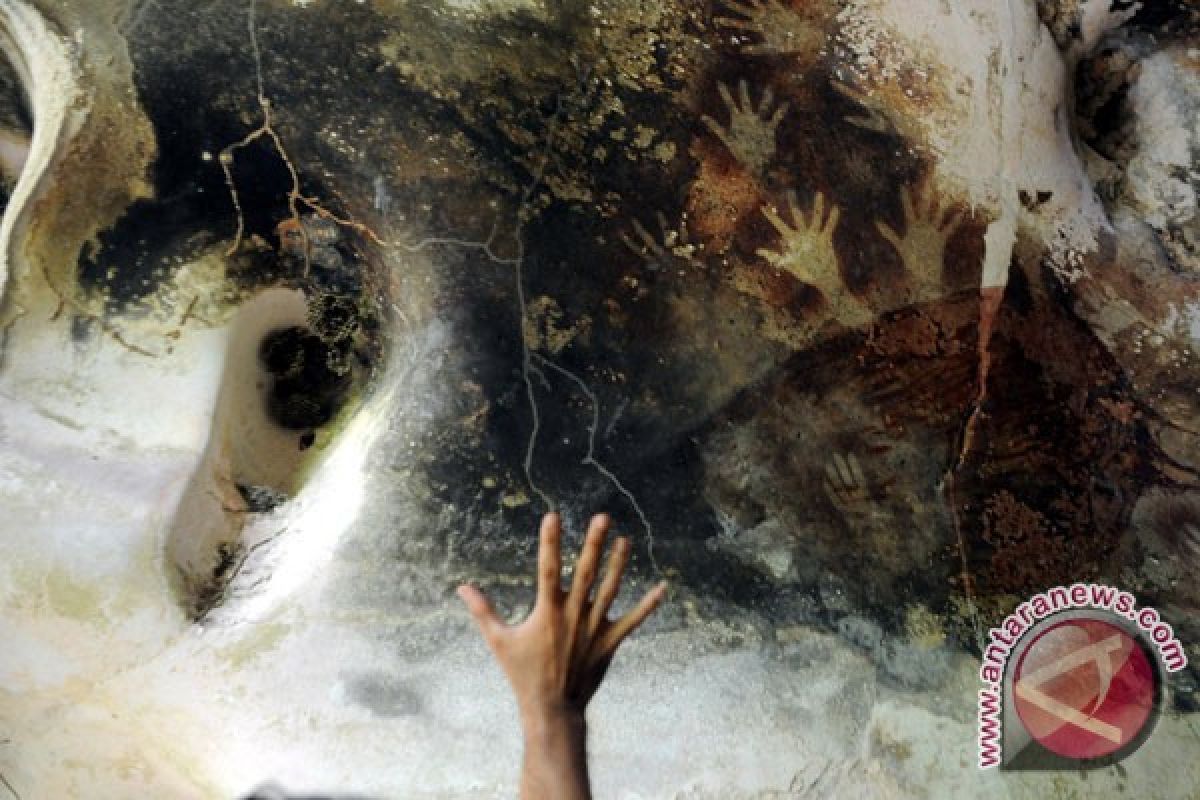One way to promote the variety and the uniqueness of attractions offered by the island Kisar is to make a list of all the attractions currently available in the land, locally known as "Yotowawa Daisuli".
Through a collaborative project between the University of Gajah Mada (UGM) in Yogyakarta and the Australian University (ANU) in Canberra, Australia, archaeologists Mahirta and Sue O`Connor of the two universities discovered the rock paintings in Kisar during their research from 2014 to 2017.
Mahirta is now in Kisar to help the North Maluku Cultural Heritage Preservation (BPCB) team to list historical and cultural sites, and objects that are available in the island, to be registered as national cultural reserves.
Kisar covers an area of only about 80 square kilometers, but the archaeologists have discovered more than 30 rock art sites and hundreds of individual rock paintings in limestone terraces on the island.
Looking like a prehistoric art gallery, the rock paintings depicting dogs, horses, boats and processions of people decorate the walls and ceilings of limestone overhangs on the tiny island of Kisar Yotowawa.
Though art lovers may not have visited the gorgeous exhibits in a formal sense, the paintings -- most of which were created around 2,500 years ago -- may be a sign of the emergence of social elites among the early Bronze Age people of the region.
Mahirta and O`Connor have done their best to discover the hundreds of rock art paintings in Kisar, and now is the time for the Southwest Maluku District Tourism Office to do its part in intensively promoting these prehistoric art galleries as tourist attractions.
Muhammad Nur, an archaeologist of Hasanuddin University in Makassar, South Sulawesi, has said the prehistoric rock art paintings that are scattered in many caves on Kisar Island, are the cultural heritages that become a tourism potential, and can increase local regional revenue.
The archaeologist of Hasanuddin University noted that the paintings are the tourism potential that must be promoted, developed, and utilized as tourist attractions that can increase regional revenue.
In addition to be an archaeologist who is actively researching prehistoric relics, Muhammad Nur is a lecturer on archaeology at the University of Hasanuddin, and a team of experts in cultural preservation in Maros District, South Sulawesi.
He was in Wonreli, the Southernmost Islands Sub-district town, to help the North Maluku Cultural Heritage Preservation Agency (BPCB) explore the legacy of prehistoric rock art in Kisar.
Muhammad Nur remarked that as well as Kisar Island, Maros District also has prehistoric paintings scattered in seven caves in the Leang-Leang area. These caves have been registered as national cultural reserves.
Paintings at the Leang-Leang prehistoric cave cultural heritage complex date back to the Pleistocene, around 20,000 to 40,000 years ago. One sample of hand-stamped paintings in the Timpuseng cave is known to be 39,000 years ago.
Since it has been developed and utilized as a tourist area, the regional revenue obtained from retribution in the first year even exceeded that which was previously obtained from the cement production.
Kisar, he said, could also do the same thing by protecting the existing prehistoric paintings, and developing and using them as tourist attractions.
The first thing, according to him, is that the cultural sites must be designated as registered cultural heritage that have to be protected legally.
Making a cultural site as a tourism area, according to Muhammad Nur, cannot only rely on cultural heritage objects, but also must be supported by facilities and other tourist spots.
In the meantime, Southwest Maluku Deputy District Head Benyamin Thomas Noach remarked on a separate occasion that the existence of prehistoric paintings on Kisar Island was a sign that civilization in the region had developed since the past.
Although up to now the paintings that are scattered almost all over the island have not yet received a definite date, the discovery is a starting point to find out how old the age of civilization is in Kisar.
The tiny island of Kisar has been inhabited by humans for more than 15 thousand years, according to Mahirta, the archaeologist of Gajah Mada University in Yogyakarta.
"The results of analysis of a number of ancient objects found in Kisar indicated that some 15 thousand years ago, its Posi coastal area was inhabited by people," he remarked in Wonrely recently.
Mahirta is an active researcher in archaeology and a lecturer at UGM. He has long been studying rock art in the form of prehistoric paintings that are spread all over an area in Kisar Island.
He said the existence of humans in prehistoric times in several caves in Kisar was proven by the discovery of fishing equipment in the form of hooks that are some 15 thousand years.
In the early days of the Holocene, there was evidence that humans used more sophisticated equipment than stone tools at the time, namely the fishing hooks which were some 15 thousand years old, according to him.
Reporter: Antara
Editor: Eliswan Azly
Copyright © ANTARA 2018









